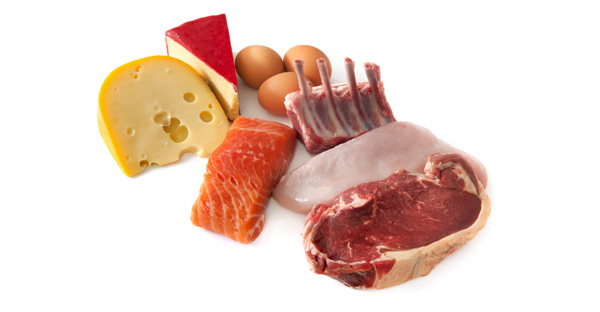

Although the authors of this book certainly promote a message that they believe is scientifically valid and useful and although a very large number of people agree with them, I take exception, for several reasons. With minor exceptions this book represents nothing more than an extension of the arguments for the Atkins diet. Thus my comments relate to what I believe to be wrong with those arguments.
There are numerous instances where the authors’ misuse scientific evidence. Of course, they will disagree because they are claiming quite the opposite, namely, that their book highlights a growing body of scientific evidence now supporting the Atkins diet, a position also publicized on the Atkins website. Trivializing and marketing the science began early with the Atkins group, starting with Dr. Atkins himself who had no use for the scientific method. According to his widow, he was proud that he never published a single peer-reviewed scientific paper. This is dramatically contrary to professional scientists in this field who have published at least dozens, even hundreds of papers that, MOST IMPORTANTLY, are subjected to critical review by peers. Thus, Atkins’ enthusiasts rely much more on personal testimonials and anecdotal reports for their arguments. This kind of evidence need not be entirely dismissed but, without systematic and transparent organization of scientific research that is critiqued by qualified peers, it is very hard to validate claims. The give and take of peer review, for example, is absolutely demanded for claims being made about personal health, especially when these claims are intended for large segments of the public.
More specifically, the authors try to convince the readers into believing that the science ‘establishment’ has finally begun to validate this diet on a wide scale, but this is simply not true. The authors, for example, highlight in the introduction that “in the last few years more than fifty basic and applied studies have been published which, in addition to validating the safety and effectiveness of the Atkins Diet, also provide new insights into ways to optimize the Atkins lifestyle.” For most readers, this implies, according to the authors, that there are 50 studies that document the superiority of the Atkins diet over other dietary strategies that can be considered for a long-standing dietary lifestyle. But, in Chapter 1 they somewhat paradoxically say that there are 7 studies (only) lasting 6 months to 2 years that compare the Atkins diet with “other common weight loss strategies”, a time considered by them to be long-term. But, in reality, this time still falls far short of the lifestyle of many years that they advocate for using this diet.
They illustrate a so-called long-term effect by citing a study done in Kuwait that highlights the magnitude of the health benefits that can be achieved with a “low carb” diet (<20 g/day, later adjusted to 40 g/day). This study certainly improved clinical lipids and lowered body weight (an average loss of 60 pounds). But the authors of this new book fail to tell the readers that this Kuwaiti diet was extremely low calorie, containing only about 970 calories per day for subjects weighing, on average, 235 pounds with a body mass index (BMI) of 39. Any diet this low in calories, regardless of its nutritional composition, will reduce body weight like this. Omitting this information, the authors of this new book then go on to state that, with coaching of the subjects for a year, “this diet outperformed that of any of the randomized groups in the other seven studies.”
Knowing nothing about the other 7 studies, the reader must then accept at face value the superiority of the Atkins diet alleged by the authors. This is an unacceptably superficial way to compare the findings of these studies. The reader is entitled to know whether the weight losses of these several different studies were compared on an absolute or relative scale? Whether severe calorie restriction was part of these other studies? Whether these comparisons were statistically significant? Whether the baseline weights for these studies were different? Whether there were consistent changes in the various lipid biomarkers? Without this information, it is not acceptable to make such a brash and sweeping conclusion that the Atkins diet “outperformed” any other diet group.
I know something about these other studies said to confirm the superiority of the Atkins diet, especially the study that the authors list first in their book and repeatedly cite in their list of references. This is a study by Gardner et al at Stanford University that was published in the Journal of the American Medical Association in 2007. The flaws in this report are serious and are often repeated in other studies on the Atkins diet. Of even more concern was the rapid and widespread media recognition quickly given to the findings of this Gardner et al study. Major headlines were published across the country in a way to lead most people to believe that the Atkins study had finally made the grade as a superior diet. Now, in this new book, the findings of this Gardner et al study appear once again, this time being repeatedly cited as evidence of good science.
Because the Gardner et al study had serious flaws and was destined to create major media comment, it therefore required critique at the time it was published. Conventionally in science, after publication of a study, this is initially done using a widely accepted, letters-to-the-editor format that might be considered as an extension of the peer-review process. Four of us in the profession therefore duly submitted our letters to the editor of JAMA to point out these flaws and to seek the investigators’ comments. Most of the time, such letters, after some modest peer review, are routinely published, but not in this case.
In my letter, the flaw that I found especially repugnant–and obvious–was their comparison of the Atkins diet results to the low fat, plant-based diet of Dean Ornish pejoratively called “extremely low” by the researchers. The original Ornish diet–and other similar diets– contains only 10-12% fat like other whole food, plant based diets but Gardner et al inappropriately tested a grossly distorted “Ornish diet” that contained 29% fat! To add further insult, they called this falsely fabricated diet “extremely low in fat”. The distortion of the diet was even more serious because the Gardner version of the ‘Ornish’ diet contained 18% protein, which is 70-80% higher than the amount recommended and which is usually found in Ornish type diets. Fat and protein together comprised 48% of the Gardner version of the diet, rather than the 20-22% usually seen in whole foods plant-based diets. In the Gardner study, there actually were two more diets being compared and, together, these four diets were nutritionally very similar (at least when compared with a truly low fat, whole food plant-based diet), thus severely limiting the ability to detect meaningful and statistically significant differences. Nonetheless, a non-significant slightly lower body weight was observed for the Atkins diet and this made headlines as if it was really important.
I have published many papers from our laboratory and have served on several science journal editorial review boards. Never have I witnessed such unprincipled behavior as that of the JAMA editor when he denied all four of our letters, especially a letter from Dr. Ornish whose study was being so grossly misrepresented. Readers had a right to hear a response from the investigators but this was not forthcoming, thanks to the JAMA editor. It was as if someone had wanted these Gardner findings published and publicized, regardless of its flaws. It is as if the funding of the study, the design of the study, the interpretation and discussion of the results, the pre-publication review of the manuscript, the refusal to publish our post-publication letters and the media reporting of the findings were script from a well-designed marketing plan. Now, three years later, the authors of this new book, who seem oblivious to the flaws of this study, herald it as important evidence helping to prove the superiority and widespread applicability of the Atkins diet.
This practice of Atkins diet researchers of making improper diet comparisons like this has occurred far too often. As a result, unsubstantiated claims are repeatedly made and dressed up as good science. Even more confounding in this history is the repeated misuse of terms and words that define high and low amounts of fat and carbs. New words (like ‘carbs’) with nebulous meanings are created. Improperly defined benchmarks of ‘high’ and ‘low’ dietary levels of fat and carbohydrate are used that greatly confuse comparisons with other dietary strategies.
Atkins himself seems to be the first to have developed the now widely used term ‘carb’. I am of the strong opinion that this was a contrived marketing word that was originally meant to question the recommendations being made at that time to consume more whole vegetables, fruits, legumes and grains. Generalizing the so-called nutritional advantage of ‘low carb’ diets had the effect of diminishing the health value of these plant-based foods because these are the only whole foods that contain carbohydrates. Even though more recent attempts are being made to distinguish ‘bad’ carbohydrates from ‘good’ carbohydrates by superficially ‘counting carbs’ (as if these are entities that can be counted!), this still stigmatizes the exceptional health value of a whole food, plant-based diet. Virtually anyone of any scientific substance during the past half-century has known that relatively simple (‘bad’) carbohydrates like sugar and refined flour, cause health problems. But this does not mean that we can generalize this large and complex class of nutritionally valuable carbohydrates, as found in whole plant based foods, into a single class called ‘carbs’, then demonize the superior nutritional value of these high carbohydrate foods.
I have many other concerns with this book as to its scientific credibility, too many to document here. Their discussion on protein, however, merits attention because of the not so obvious but nonetheless pivotal role of this nutrient when justifying the Atkins diet. The authors’ protein discussion not only sends the wrong message and is extremely superficial, but also it is factually wrong. For example, they emphasize that the RDA (about 8-10% of total diet calories) for protein “reflects the minimum, not the optimal, amount of protein an average healthy person needs.” Wrong. The RDA is not and was never meant to be the minimum amount of protein needed. The RDA is about 2 standard deviations above the minimum daily requirement (MDR) so as to insure that the minimum requirements of virtually all people are being met. (If all people theoretically consumed the RDA level of protein, about 98% of them would be consuming in excess of their needs!) The authors’ perception that the RDA is a minimum requirement encourages, in effect, a higher than necessary consumption of protein. This is a clear bias favoring higher protein consumption (meaning animal-derived protein) that then extends to further comments by the authors that plant protein is, in effect, not as good as animal protein (1) because it is “incomplete” and (2) because it does not “satiate” as well, thus suggesting, in the authors’ view, the need for still more oil/fat to this already high fat diet.
And finally, they recommend 20-25% dietary protein, then claim somewhat defensively, that this is not a high protein diet. This is nonsense. The present range of dietary protein for the vast majority of the population is about 11-22% of calories (average of 17%), with three-fourths of this protein provided by animal-based foods. The Atkins recommendation for dietary protein is triple that of the RDA, high by anyone’s standard (except for these authors!). A whole food plant-based diet of mixed vegetables, fruits, legumes, grains and tubers can easily provide the RDA of about 8-10% dietary protein, based on long established experimental evidence (since 1943) that this is more than enough protein. Increasing protein above the RDA of 8-10% up to an average of 17% is generally obtained by consuming increasing amounts of animal-based foods. Furthermore, increasing dietary protein from about 10-12% to 20%, for example, eventually increases risk for most people for a large number of diseases and conditions too numerous to discuss here. These include serious diseases like cancer, heart disease, osteoporosis and certain autoimmune diseases, as well as an overwhelming number of explanatory mechanisms. The authors mentioned none of these health problems associated with the high dietary protein of the Atkins diet. Like a house of cards, a diet ever higher in animal protein-based foods, usually along with higher dietary fat (the typical Atkins recommendation) leads to early death and disability resulting from the diseases that kill most of us in the U.S. before our time.
The major problem with this book goes well beyond the numerous specific errors committed by these authors. It is the misguided Atkins diet paradigm into which this book is inserted that is a much more ominous problem.
Most people agree that there are health problems with the standard American diet (SAD), which, on average, is 17% protein and 35% fat (totaling 52%), leaving 48% for carbohydrates. The Atkins diet rightly recommends reducing the ‘bad’ carbs but primarily by replacing these ‘carbs’ with increasing protein (30%) and fat (40%) (totaling 70%) thus compromising an already low intake of highly nutritious carbohydrate-rich plant-based foods. Within 10 years or less, I predict that most people using the Atkins diet will either quit or experience serious health problems, although many may see more health benefits than adverse health effects in the short run. The nomadic Masaai of eastern Africa who consume large amounts of meat, milk and eggs, incur like old American men, extensive atherosclerotic lesions in spite of their extensive walking.
The same decreased consumption of ‘bad’ carbs advocated by Atkins’ people, can be easily accomplished by a whole food, plant based diet but not by increasing fat and protein but by increasing the consumption of whole food, plant-based diet that contains the countless antioxidants and complex carbohydrates (e.g., fiber). This simultaneously avoids excessive intakes of protein, fat and bad ‘carbs’ (like sugar and refined flour) while enhancing the intake of the highly nutritious whole food, plant-based foods. There is far superior to replacing the ‘bad’ carbs with fat and protein, mostly from animal-based foods, that contain little or no antioxidants and complex carbohydrates.
Finally, the authors in this book are committed to finding scientific evidence that encourages people to consume foods of personal choice (good marketing strategy!), generally meaning high fat, high protein based meats, milk and eggs. This pleases many people who like to hear good things about their bad habits, but this is a strategy that can seriously bias scientific objectivity. It should be noted that fat, salt and sugar are acquired tastes and, for fat and salt, there is convincing evidence showing that within a month or so, these addictions can be reversed while new and healthier taste preferences emerge.
This brings me to my final question, namely, why do many Atkins-oriented people personally accustomed to high fat, high salt and high protein diets adamantly refuse both to personally try a whole foods, plant-based diet and even refuse to learn about its extraordinary health benefits? A partial reason for this may be that they don’t realize that taste preferences can markedly change. It is irresponsible for scientists and would-be scientists to dismiss health-promoting scientific evidence merely to please companion readers and listeners (is this because of the lure of money?). I deeply honor, above all else, people having the right to choose but I strongly reject withholding information that may assist their making wise choices for themselves.
I was initially inclined to give a 2 ranking for this book–to acknowledge the authors’ effort to encourage people to reduce their consumption of ‘bad carbs’ (to use their words), but the remedy offered by these authors is so seriously misguided that I finally decided that a score of 1 is actually too generous.
[
Copyright 2025 Center for Nutrition Studies. All rights reserved.
Deepen Your Knowledge With Our
Plant-Based Nutrition
Certificate
Plant-Based Nutrition Certificate
- 23,000+ students
- 100% online, learn at your own pace
- No prerequisites
- Continuing education credits













